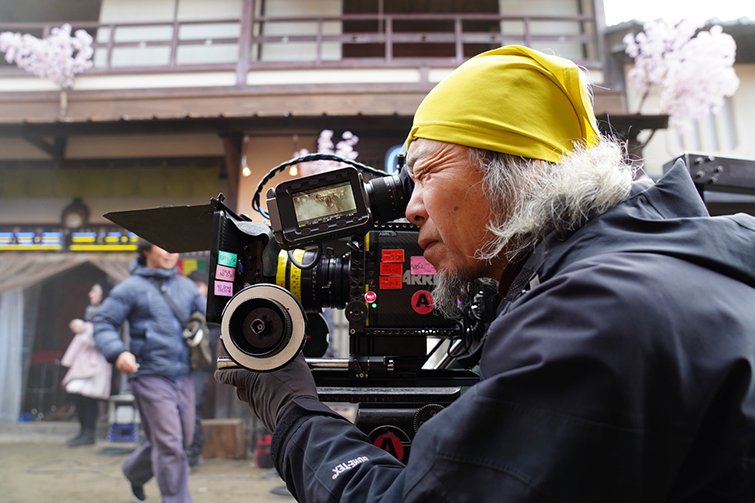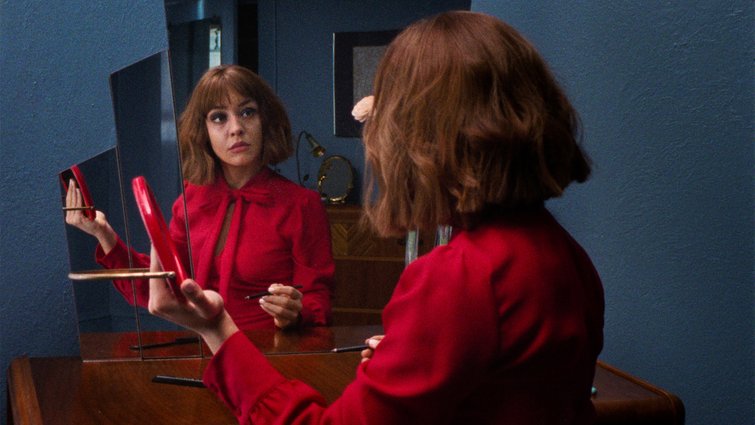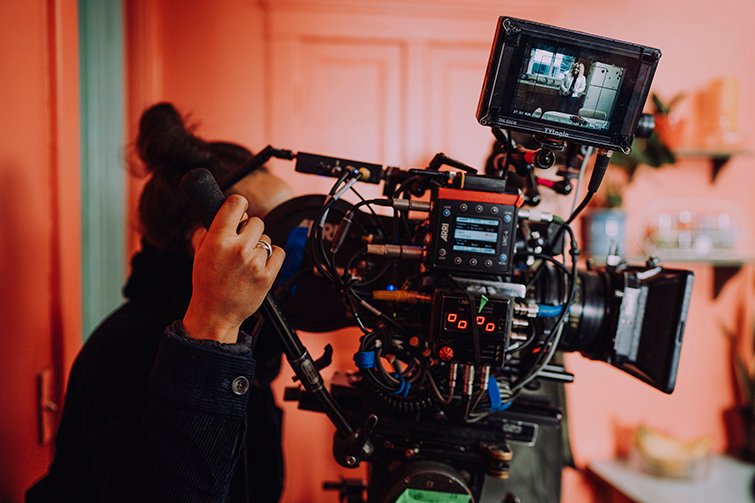
A Look into the Cameras Used at Sundance Film Festival 2021
We chat with the filmmakers of Sundance 2021 to explore what cameras, lenses, and gear they used and why. Let’s dive in.
In a typical year, the streets of Park City, Utah would be bustling with activity. Studio executives would mingle with big name stars and up-and-coming indie filmmakers alike, as hordes of press and fans would descend on the usually quiet mountain town. However, like many aspects of life, this year will be quite different indeed.
Yet, while the 2021 Sundance Film Festival might not be flying in full force on the snowy streets of Utah, there’s still a festival going on, and at the heart of it there will be plenty of impressive films. We reached out to the filmmakers of Sundance 2021 to talk about their films and explore the cameras, lenses, and gear that they used to create their fantastic shorts, docs, and features.
Let’s take a look at a few of the technical specs behind some of the big-named features, as well as explore the cameras behind some of the first-timers, to learn what cameras, gear, and insights helped these films standout at Sundance 2021.
ALEXA Mini: Prisoners of the Ghostland (Feature Narrative)

The ALEXA Mini is compact and easy to handle, and I really like how the ARRI sensor captures organic shades of color. Also, the Ultra Prime is compact and sufficiently sharp, so it fits well with our shooting style. This combination is very useful and effective to capture free acting from the actors at a good angle. We used tobacco brown as the color tone for scenes in the wastelands. For flashback scenes, we used the LUT based on the tone made from cross-processing the color reversal films.
– Sôhei Tanikawa, Director of Photography
It’s not surprising to hear that many of the films that have premiered at the Sundance Film Festival this year have been shot on ARRI cinema cameras. However, what might be a bit surprising is to hear that one of the more popular in ARRI’s vaulted line of digital cinema options is the ARRI ALEXA Mini. As a more lightweight and slimmed down option compared to other ARRI cameras (which we’ll hear about below), the ALEXA Mini really fits the style and needs of many of the small-budget indies, as well as the run-and-gun nature of several of the Sundance features.

Sion Sono’s Prisoners of the Ghostland became one of the most anticipated premieres at Sundance this year the moment it signed Nicolas Cage as its star. This indie feature combines action, thriller, and horror elements wistfully with its cinematography manned by Sôhei Tanikawa, who creates a truly beautiful pallet of colors and visuals with his ALEXA Mini and Ultra Prime lens setup.
ARRI Amira: Bambirak (Short Narrative)

We were shooting on an ARRI Amira that my cinematographer Lorena Duran owns. However, the lenses we got from our rental house in Hamburg, Germany (for a very low price) were too digital for my taste. I was initially planning to shoot on film, but that was not in the budget! Additionally, we couldn’t afford to rent a good set of lenses. My cinematographer, however, spotted a very old Angenieux zoom lens that was a Super 16 lens. We first thought we would not be able to use the lens because we could see the edges in 2K. Lorena came up with the idea of shooting the whole project in HD and that would allow us to use the lens and create a 2002 look.
– Zamarin Wahdat, Director
Alongside the ALEXA Mini, another very popular camera for both Sundance features as well as shorts was the ARRI Amira. This was the case for the emerging voices behind the Sundance short Bambirak, written and directed by Zamarin Wahdat. Born in Afghanistan and raised in Germany, Wahdat has honed her filmmaking skills as a camera operator over the years. Along with her DP Lorena Duran, the duo decided to go with the Amira as the best option to get that true film look—without having to actually shoot on film, which can be quite expensive for up-and-coming filmmakers.

The Amira also proved to be quite flexible as Wahdat decided to shoot the project scaled down and in HD as a work-between with their desired lenses. Overall, the effect worked beautifully to create “a very unique look for our film and a nostalgic feel,” which Wahdat reports appears to many as if “we shot on Super 16.”
Blackmagic Pocket Cinema Camera 6K: R#J (Feature Narrative)

We shot our film R#J with two Blackmagic Pocket Cinema Camera 6K’s, modified with PL mounts, using a matching set of 18mm, 25mm, uncoated Zeiss Super Speeds, 32mm Cooke anamorphic, and a 28-76 Angeniuex zoom. Because our film is told from the perspective of our main characters’ phones and we didn’t want to actually use cell phones, we needed a way to keep our cameras lightweight enough to create an organic hand-held feel to our images without it feeling heavy-handed.
– Diego Madrigal, Director of Photography.
One of the themes of this year’s Sundance Film Festival was a refreshing amount of creative ingenuity on the part of the diverse and talented filmmakers. Because many of the films had to tackle many logistic issues to even film during a global pandemic, while navigating the challenges of production with smaller crews and new safety procedures, many of the stories and filmmaking styles had to find creative ways to adapt.

A perfect example of this comes from Sundance shorts alum Carey Williams’ debut feature R#J, which is told from the perspective of the lead characters’ different smartphones. And, while smartphone filmmaking is certainly becoming a thing, Williams and cinematographer Diego Madrigal opted to go with the two more reliable and powerful (yet light, affordable, and nimble) Blackmagic Pocket Cinema Camera 6K cameras. The results are fascinating as you can see a true blend of indie cinematography mixed expertly with a style that makes you feel like you have the power to tell timeless narratives from the palm of your hand.
Sony FS5: Spirits and Rocks: An Azorean Myth (Short Doc)
I bought it in 2016, at the beginning of my studies in documentary filmmaking. I knew that I would have to travel and shoot a lot by myself, and was looking for a camera that would allow me to work as a one-woman crew. The Sony FS5 kit was perfect for this purpose: it’s compact, light, and has many integrated functions. I often had a limited amount of time to shoot and edit, so the picture profiles saved me a lot of time, while helping me to get cinematic looks. I mostly use it with the 18-105 mm f/4 kit zoom and prime Canon lenses. The rest of my equipment includes: a Manfrotto tripod, a RØDE shotgun mic, and Sennheiser lavaliers. I made several short films with this equipment that were selected in festivals and broadcast.
– Aylin Gökmen, Director
Sundance isn’t just about narrative, shorts, and features. With each year, the festival features some breakout documentaries that both entertains the audience, as well as actually brings about real change in the world. One of the standout films in the short doc category was by the Swiss-Turkish filmmaker Aylin Gökmen with her film Spirits and Rocks: An Azorean Myth, which she shot on the Sony FS5.
Speaking about her camera choice, as well as her accompanying lenses and rig, Gökmen—alongside her cinematographer Marianna Vas—were tasked with telling the perilous, yet important, stories of the inhabitants of a tumultuous volcanic island. This meant lots of guerilla-style documentary shooting, which meant they had to embrace all the challenges of solo videography and working in tricky situations. Luckily, the Sony FS5 is uniquely qualified for run-and-gun documentary filmmaking without compromising cinematic quality footage, and has served Gökmen well on several projects throughout the years.
Canon C300 Mark II: My Name Is Pauli Murray (Feature Documentary)

The Canon C300 Mark II with the Canon cinema primes are a fantastic combination to create beautiful colors, glowing skin tones, and hold on to a large dynamic range, with deep shadow details and exquisite highlights. The Canon sensor technology allows me to be an artist, especially when I have to adjust to challenging documentary scenes in low-lights or with extreme contrast situations. Without the sensor’s latitude and easy to modify camera settings, I wouldn’t be able to instantaneously capture and react to an unpredictable moment following my lead characters through life. It is important to remain nimble and reactive with a camera rig to seize the moment gracefully. Therefore, the Canon C300 Mark II is my first choice for documentary filmmaking.
– Claudia Raschke, Director of Photography
Another one of the most popular cameras found behind Sundance documentary shorts and features was the always reliable Canon C300 Mark II. Used by Claudia Raschke to shoot the documentary feature My Name Is Pauli Murray, the film is a beautiful love letter look at the life and career of the American civil and women’s rights activist Pauli Murray, who was the first African-American woman to be ordained as an Episcopal priest.

Directed by Julie Cohen and Betsy West (who also produced/directed the Academy Award–nominated documentary RBG), Cohen and West’s latest documentary is another masterclass in how to shine a light on an important civil leader by interweaving writings, photographs, and audio recordings, along with both new and recently discovered interviews and footage. Shot on the Canon C300, Raschke was able to balance this diverse mix of media looks and styles to help weave a seamless story from start to finish.
S16mm on the ARRI 416: Superior (Feature Narrative)

Our film, Superior, is based on the short by the same name which premiered at Sundance in 2015. We enter the feature six years after the short has taken place and it is largely in the same world. The short was shot on an ARRI 416 S16mm, and director Erin Vassilopoulos and I knew that was an important part of the world we had built. For the feature, we used Cooke S4i 35mm lenses, 12, 14, 16, 18, and 27mm, and a Canon 6.6-66mm S16 zoom. After testing film formats and lenses, we settled on our configuration for its inherent neutral warmth and nostalgic, but not over-the-top, feel for our 1987 thriller. We liked the amount of grain, the depth of color in the skin tones, and the way red shows up on our Kodak Vision3 stocks—7207 and 7219. The goal of the look was never to be retro or campy, but to call back to our own childhood memories and photographs from the 1980s.
–Mia Cioffi Henry, Director of Photography
While many of the films at Sundance are shot on digital cameras for aesthetic, practical, and budget reasons, the film look was just as prevalent and dominant as ever this year. And, for filmmakers who are able to shun their digital overlords and embrace the analog film medium, the results can be quite fantastic. This year, one of the U.S. Dramatic Sundance selections was a film called Superior, directed by Erin Vassilopoulos and shot by Mia Cioffi Henry on the ARRI 416 with Kodak Vision3 stocks (specifically 7207 and 7219). Read more about choosing Kodak motion picture stock for your projects.

Using a film camera like the ARRI 416 can, of course, be a bit of challenge. But, as Vassilopoulos or Henry will tell you, it’s well worth the risk and investment as the duo were able to truly pull out some luscious visuals, harkening back to the best images of 1980s cinema. Telling a story of two identical twins with vastly different life paths, Superior continues many of the themes and narratives from its original short, confirming that if you want that truly cinematic look, the risk will always be worth the reward.
Cover image of Mia Cioffi Henry via Sundance Institute.
For more camera insights and film festival interviews and coverage, check out these articles below.






